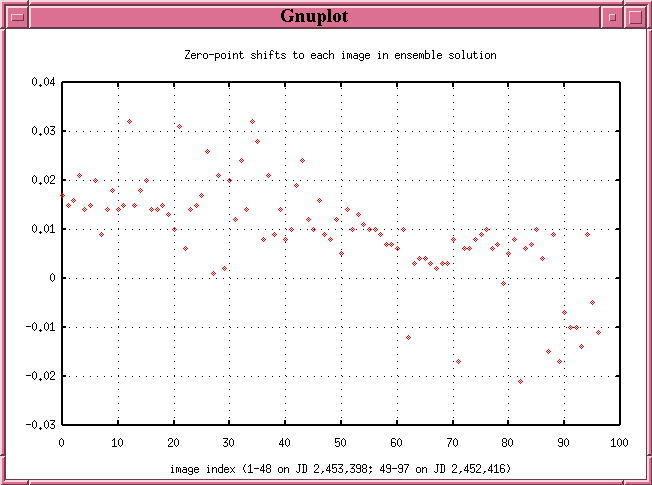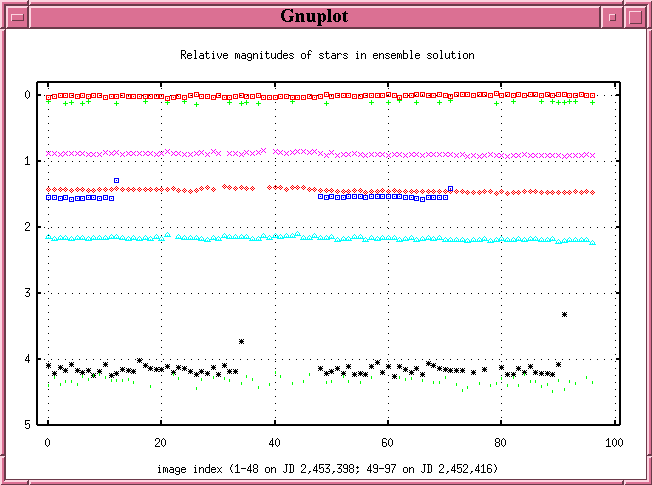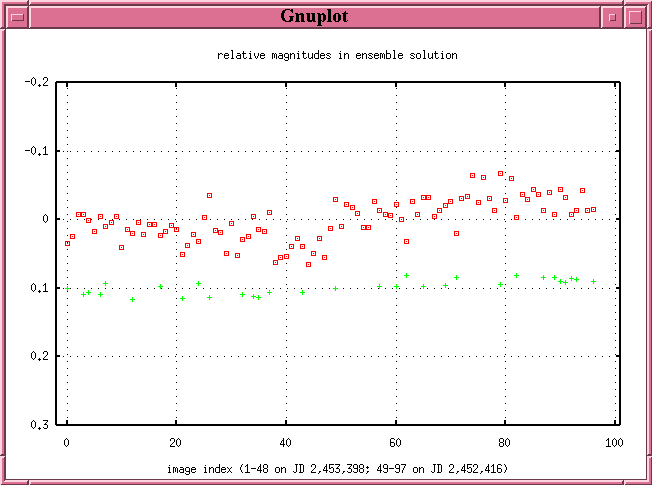



John Greaves wrote about offsets between nights:
> Granted the > mean mag on the two nights is different enough to make one feel that > different parts of a varying light curve are being sampled. Trouble is, > I'm getting different signals on this.
Andrew Bennett weighed in with his experience:
> The basic problem seems to be that two frames on different > nights don't cover the same patch of sky, don't share the > same Tycho stars and do manage to have unexpectedly large > zero-point offsets. What is worse is that these offsets > seem to manage to afflict individual stars without > affecting all nearby stars in the same way ...
I can't do a real analysis of this problem right now, because it would take forever :-( However, I tried something quick last night as a check. John was writing about the star HD 155229. I decided to pull out the magnitudes for this star and all others within roughly 1 degree from Tom's July, 2002, Mark IV dataset, and subject them all to an ensemble solution.
It turned out there were just two nights with measurements -- not enough, really, but I'd already gone this far, so ... I ran the ensemble solution, and found the following:




Eventually, after data is placed into a database, I need to figure out a way to run ensemble solutions on it in a systematic way. This is an area which needs lots of investigation.
But I haven't yet seen a strong case for large night-to-night zero-point variations...